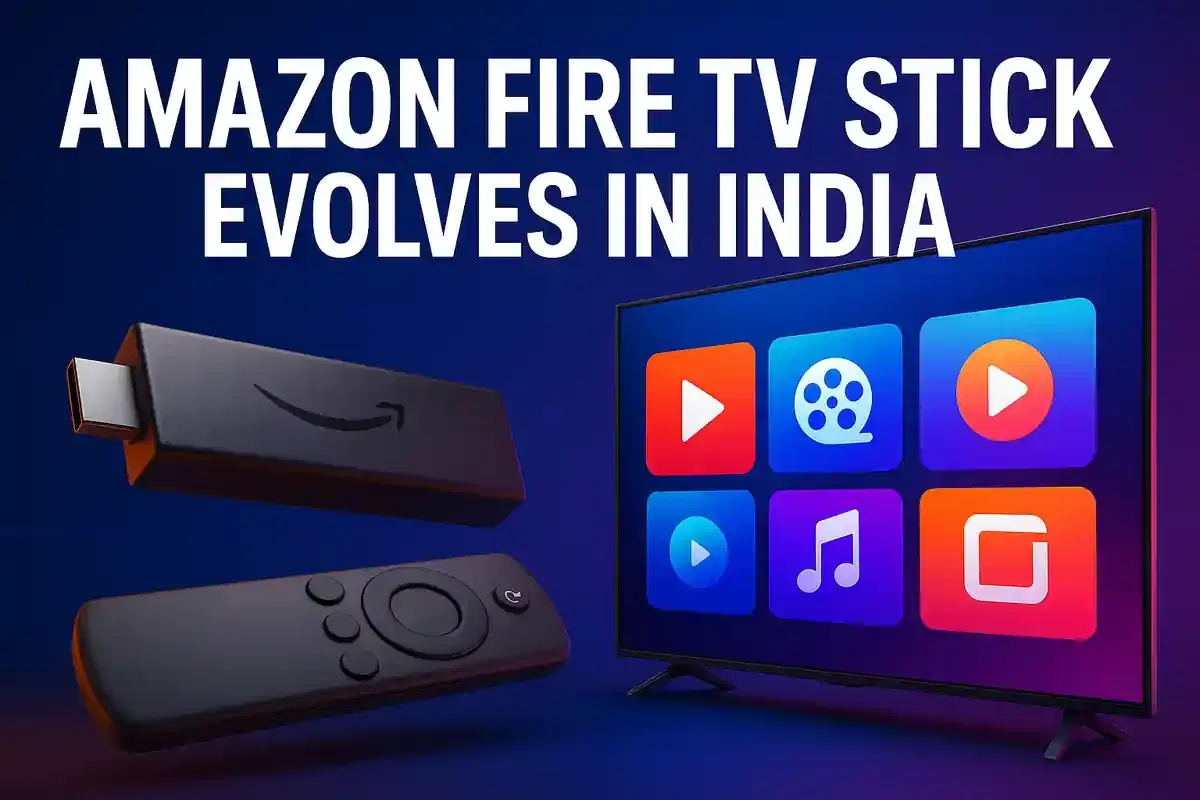Amazon Fire TV Stick Adapts as India Embraces Smart TVs
Tech
|
29th October 2025, 3:30 AM

▶
Short Description :
Detailed Coverage :
India's television market has undergone a massive transformation, with smart TVs now dominating sales, accounting for nearly 95% of all units sold. This surge has led to questions about the future of external streaming devices like Amazon's Fire TV Stick, which once disrupted traditional DTH services.
However, Amazon, through its Director and Country Manager Dilip R.S., states it follows customer trends. Fire TV Stick continues to be a top seller, and its Fire OS software is increasingly integrated into smart TVs by manufacturers. Xiaomi is a key partner in India, with its Fire OS-powered TVs being top sellers during recent sales events.
Amazon sees this shift not as a threat but as an expansion opportunity. Fire OS now powers over 300 TV models globally, and Amazon is looking for more OEM partners in India. For existing smart TV owners, the Fire TV Stick offers an upgrade path to overcome slow interfaces, providing speed, personalization, and voice control. The device's reach is extensive, covering 99% of India's PIN codes.
The company is further innovating with the new Fire TV Stick 4K Select, offering advanced features at an accessible price. The future strategy heavily involves AI, with the upcoming Alexa Plus, a generative AI-powered assistant, designed to enhance content discovery and offer personalized recommendations. Amazon also aims to make the TV a central point for smart home control, managing devices like lights and air conditioners via voice commands.
Impact This news indicates Amazon's strategic adaptation to the Indian smart TV market, focusing on software and AI integration rather than just hardware sticks. It suggests continued investment and innovation in the Indian entertainment and smart home technology sector. The company's focus on partnerships and AI will likely influence competitors and shape the user experience for millions of Indian households. The growth in connected TVs and Amazon's AI advancements signal significant market evolution. Rating: 8/10
Explanation of Difficult Terms: DTH (Direct-to-Home): A service that provides television channels directly to a household's antenna, bypassing local cable operators. Set-top box: A device that decodes digital television signals for viewing on a conventional television. Streaming: Watching or listening to content (like videos or music) directly from the internet without downloading the entire file first. Smart TV: A television set that integrates internet and interactive features, allowing it to stream content, browse the web, and connect to other devices. Fire OS: An operating system developed by Amazon, based on Android, used for its Fire TV devices and Fire tablets. Fire TV Stick: A small device made by Amazon that plugs into a TV's HDMI port to enable streaming services and apps. Prime Day: An annual sales event hosted by Amazon. Festive sale: Sales events organized by e-commerce companies during Indian festive seasons. OTT (Over-The-Top): Refers to streaming services (like Netflix, Amazon Prime Video, Disney+ Hotstar) that deliver content over the internet, bypassing traditional broadcasting and cable TV. OEM (Original Equipment Manufacturer): A company that manufactures products or components which are then sold by another company under its brand name. Generative AI: Artificial intelligence capable of creating new content, such as text, images, music, or code, based on patterns learned from existing data. Alexa Plus: An advanced version of Amazon's AI voice assistant, Alexa, enhanced with generative AI capabilities for more intelligent interactions and suggestions. HDMI (High-Definition Multimedia Interface): A standard for connecting audio and video devices, commonly used to connect streaming devices or game consoles to TVs. HDR10+: A high dynamic range (HDR) technology that enhances contrast and color, providing a more vibrant and realistic picture quality.